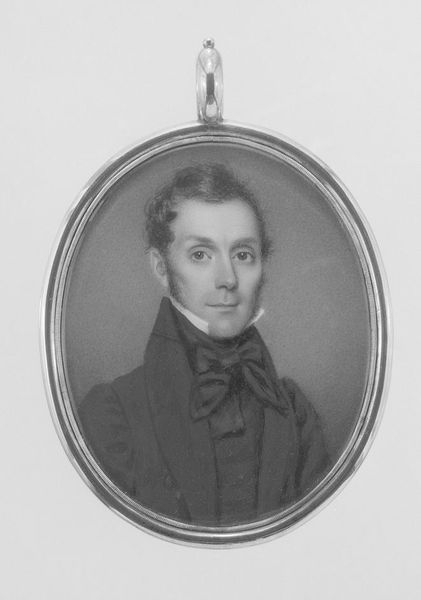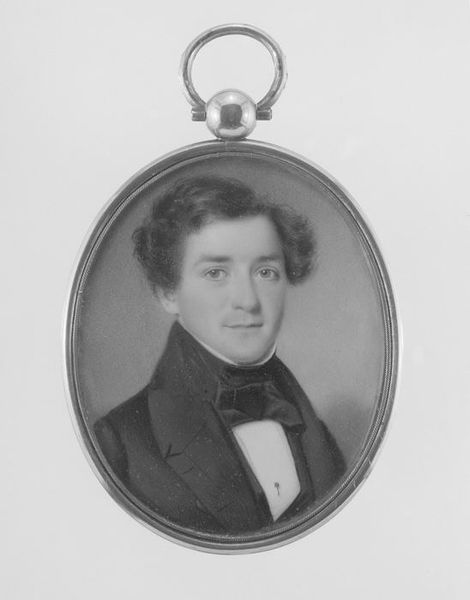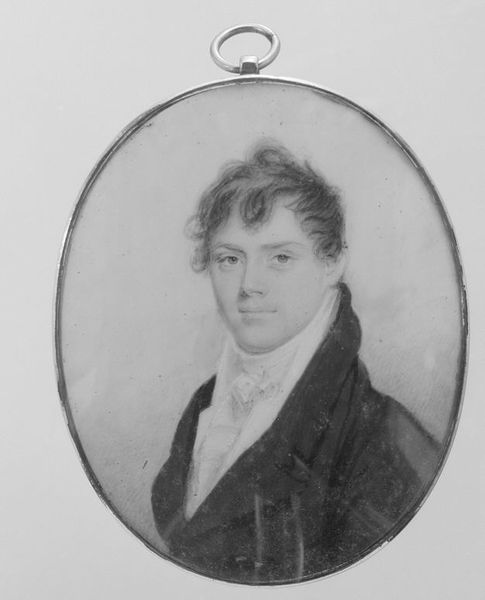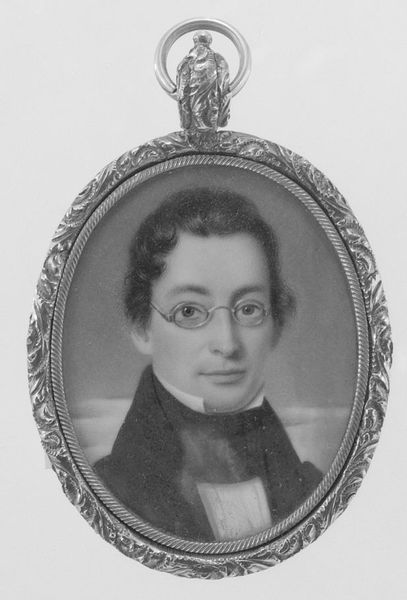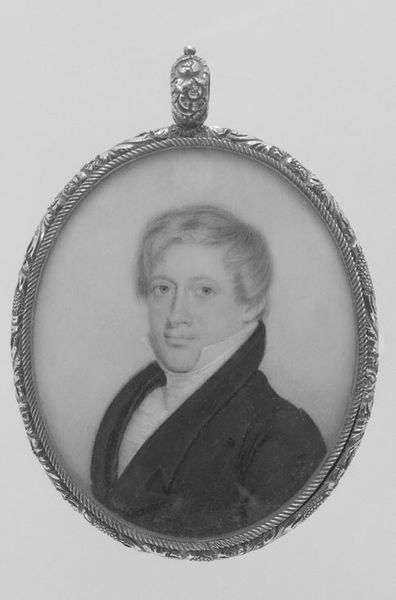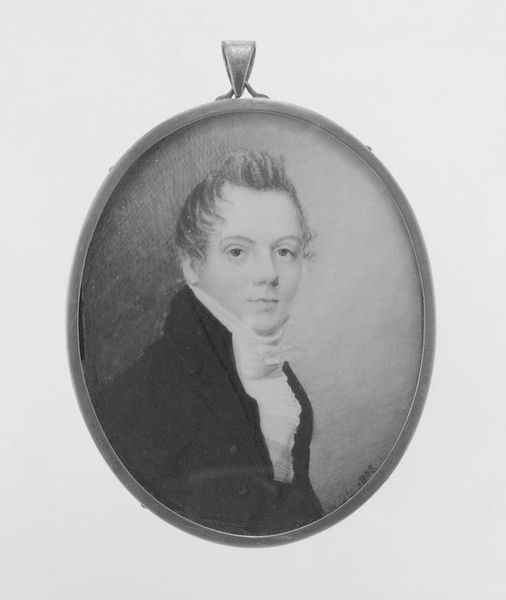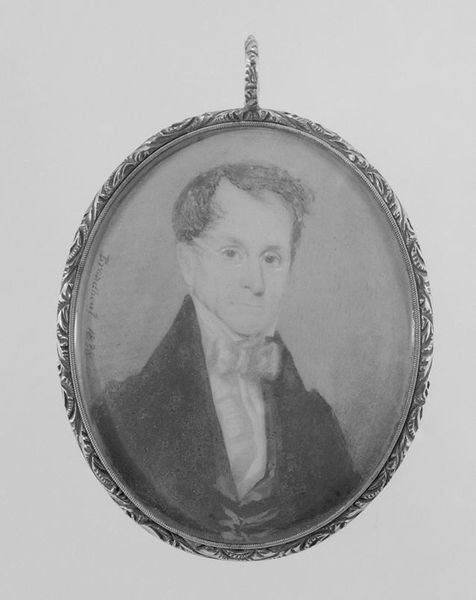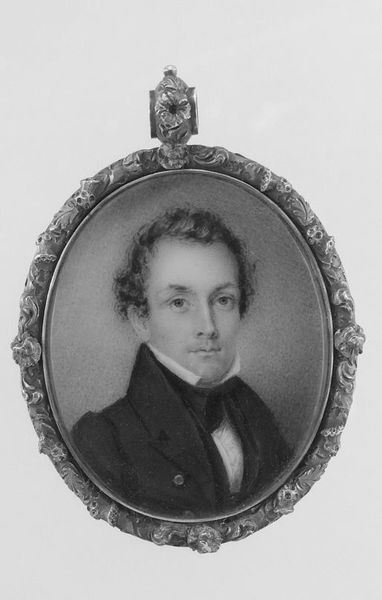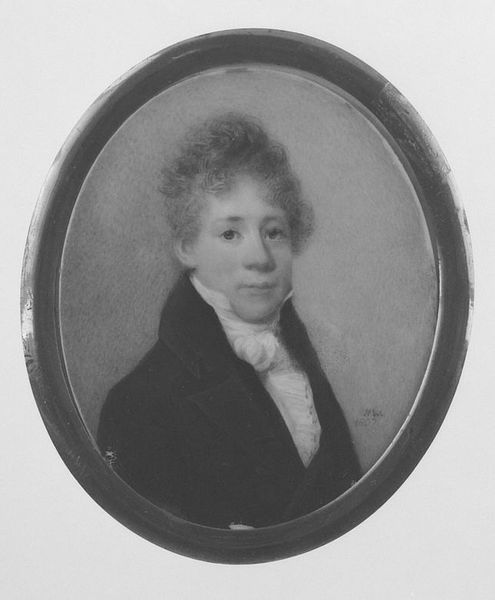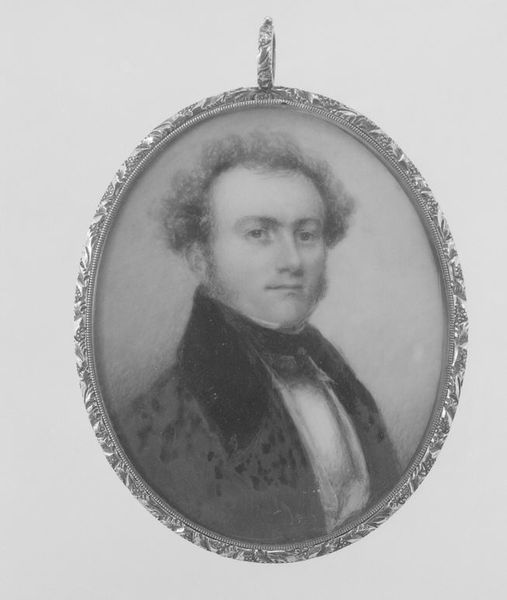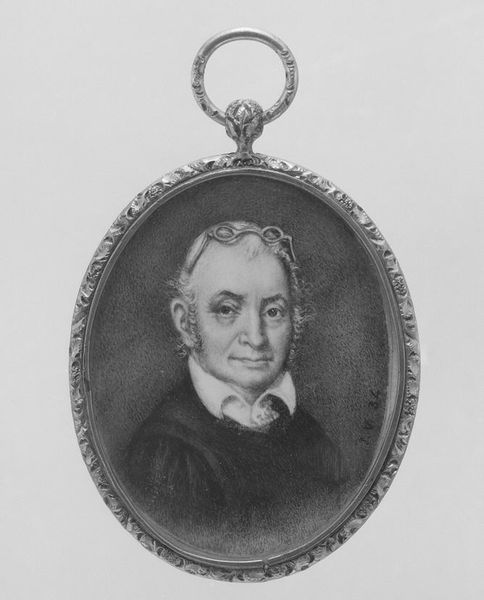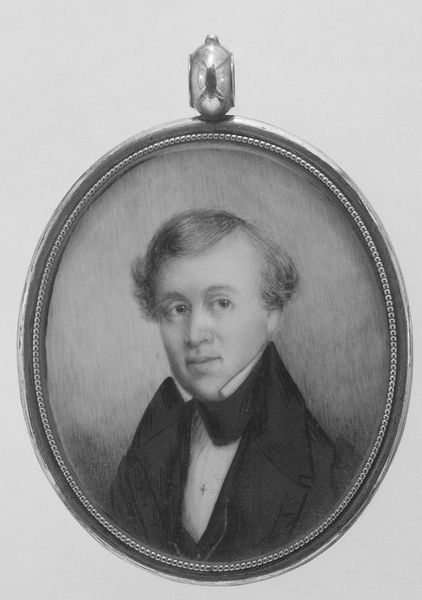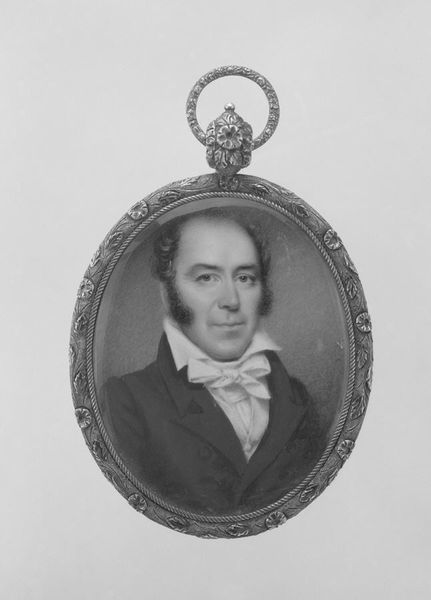
#
portrait
#
black and white
#
men
#
academic-art
#
miniature
Dimensions: 1 13/16 x 1 1/2 in. (4.6 x 3.8 cm)
Copyright: Public Domain
Editor: This is a miniature portrait of Lazarus M. Goldsmith, made in 1833 by William Lewis, here at the Met. It’s monochromatic and quite small – contained in a decorative oval frame. I find the level of detail within that limited space quite compelling. What can you tell me about it? Curator: Well, let’s start with the obvious: its materiality. The substrate – likely ivory, perhaps bone – the pigments painstakingly applied, the silver frame. Think about the labour involved. Someone had to mine the silver, refine it, craft the frame. Then the painter meticulously grinding pigments, layering tiny strokes. Miniature portraits were luxury items, a very particular form of material consumption in the 19th century. Editor: So it’s less about the likeness itself and more about the social context of its creation? Curator: Precisely. The portrait itself signifies status, but so does the *process* of having it made. Who could afford such an extravagance? The black and white rendering focuses our attention. Was the limitation in monochrome artistic, or related to expense or time? What message was conveyed? Also consider how something like this circulates – perhaps worn as jewelry, a signifier in a specific social circle. Editor: It really does put a different spin on the work, focusing less on the subject’s identity and more on how its production reveals socioeconomic factors. Curator: Exactly. And what’s really fascinating is how that production is now viewed within the contemporary economy. Do we consider its labor, the exploitation and colonial contexts? The consumption around such a commodity and portrait needs considering. Editor: I hadn't considered all the steps involved to get from raw materials to this finished piece. I see how focusing on materiality provides an economic and social framework. Curator: Absolutely. Looking beyond just subject and aesthetics lets us explore who gets to commission and consume art, and what power that represents.
Comments
No comments
Be the first to comment and join the conversation on the ultimate creative platform.
